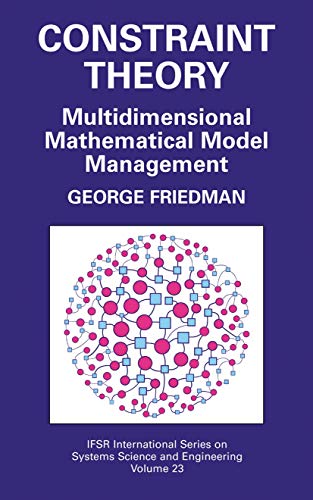At first glance, this might appear to be a book on mathematics, but it is really intended for the practical engineer who wishes to gain greater control of the multidimensional mathematical models which are increasingly an important part of his environment. Another feature of the book is that it attempts to balance left- and right-brain perceptions; the author has noticed that many graph theory books are disturbingly light on actual topological pictures of their material. One thing that this book is not is a depiction of the Theory of Constraints, as defined by Eliyahu Goldratt in the 1980’s. Constraint Theory was originally defined by the author in his PhD dissertation in 1967 and subsequent papers written over the following decade. It strives to employ more of a mathematical foundation to complexity than the Theory of Constraints. This merely attempts to differentiate this book from Goldratt’s work, not demean his efforts. After all, the main body of work in the field of 1 Systems Engineering is still largely qualitative .
The enormous potential of digital computation to manage new complex systems is impeded by exponential increases in complexity. As the model's dimensionality increases from hundreds to thousands of variables, and as submodels constructed by diverse technical teams are integrated into the total model, the model is likely to become inconsistent and even more likely, the computational requests on the model become unallowable. This text analyzes the way constraint theory employs bipartite graphs and constraint matrices to detect and correct these well-posed problems. It also presents the process of locating the "kernel of constraint", literally trillions of times faster than a random search, determining consistency and compatibility within seconds. This text is an invaluable reference for all engineers, mathematicians and managers concerned with modeling.
"Dr. George Friedman is indisputably the father of the very powerful methods of constraint theory." --Cornelius T. Leondes, UCLA
"Groundbreaking work. ... Friedman's accomplishment represents engineering at its finest. ... The credibility of the theory rests upon the formal proofs which are interspersed among the illuminating hypothetical dialog sequences between manager and analyst, which bring out distinctions that the organization must face, en route to accepting Friedman's work as essential to achieve quality control in developing and applying large models." --John N. Warfield
